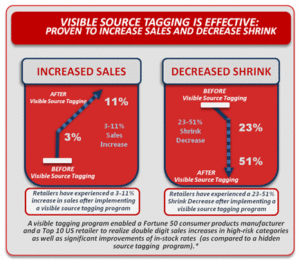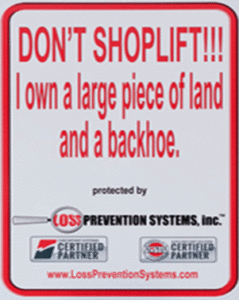3 Walmart Employees in Florida Face Charges in Death of Shoplifter -This is one of the many cases where employees or shoplifters die when a shoplifting incident occurs. It is not news anymore. It is too common to surprise people, and shoplifting as a social problem is not getting any better. As a retail owner or LP officer, what are some of the solutions that we need to be aware to mitigate these incidents in our store? Is the store layout a solution? More greeters at the door? More LP personnel? The billions of dollars lost due to shoplifting increases every year, and the loss of lives doesn’t seem to get any less. Do you need personnel training for your store? System solutions to help you with shoplifting? Contact us to help you reduce your loses and increase your profits.
The Mobile Side of Retail Loss Prevention
While corporate management makes a concerted effort to distribute these guidelines to each store manager, nine times out of ten, these plans are extensive paper-based manuals, posters, flip books, building diagrams, and websites that are too cumbersome to access quickly. Even worse, they are often lost or filed away in a drawer and not available when an issue arises.
LP101: Embezzlement in the Retail Environment
Embezzlement is a crime that involves a breach of trust.
Embezzlement is a type of theft involving a person or persons entrusted to property owned by someone else (such as an employee) who then uses fraudulent means to illegally misappropriate the property or cash entrusted to them.
Embezzlement is a breach of the fiduciary responsibilities placed upon a person. In this type of fraud the assets are originally under the control of the person lawfully, but the person then uses the assets for unintended purposes.
For example, a Cash Office Manager would be authorized to have control over cash in the cash office for business purposes and management. However, if the Cash Office Manager took possession of cash and illegally removed it from the cash office for their own personal use, this would constitute a form of embezzlement. If an attorney has control of an individual’s assets in order to manage their financial affairs, but misappropriates some or all of their client’s money into the attorney’s personal bank account, this would constitute embezzlement.
Elements common to embezzlement would include:
- The assets must belong to someone other than the accused (such as an employer)
Store Worker Fatally Shot Trying To Prevent Shoplifting
CHICAGO (CBS) — An employee was shot and killed while trying to stop a person from shoplifting on the South Side.
The victim was working at a Family Dollar store in the 7900 block of South Ashland in Auburn Gresham when he was shot around 5 p.m. Tuesday.
When confronted, the shoplifter pulled out a gun and opened fire, hitting the worker in the chest, police said.
The 30-year-old man was pronounced dead at Advocate Christ Medical Center in Oak Lawn.
Customers said the victim was Jquinn McCune, the store’s manager.
“I’m so sorry this happened to him,” said Matthew Hobson. “I mean, he was a great, great inspiration to the young people in the neighborhood. He tried to get along with everybody, looked out for everybody.”
The man who fired the shots fled on foot in unknown direction

 a good example using one of the newer clear, Checkpoint Systems stock labels. The trademarked “lock” and wording has been tested extensively.
a good example using one of the newer clear, Checkpoint Systems stock labels. The trademarked “lock” and wording has been tested extensively.

 How do I approach a shoplifting incident? This question is asked of me almost on a daily basis by store managers and owners. We always give advice and best practices on how to deter a shoplifter by using EAS devices, but what should you actually do if you are faced with a shoplifting incident that you personally witness? When should you call the police? When can you legally detain someone? While not every situation is the same, there are some basic best practices to follow. Here’s what I train my managers and can be a great starting point for you.
How do I approach a shoplifting incident? This question is asked of me almost on a daily basis by store managers and owners. We always give advice and best practices on how to deter a shoplifter by using EAS devices, but what should you actually do if you are faced with a shoplifting incident that you personally witness? When should you call the police? When can you legally detain someone? While not every situation is the same, there are some basic best practices to follow. Here’s what I train my managers and can be a great starting point for you. “Think globally, act locally” is a saying associated with the Green Movement. It encourages people to be aware of the environmental needs of the whole planet, while taking positive action in their own communities to promote its health. Over the years the idea, and the phrase, has been co-opted to discuss other issues.
“Think globally, act locally” is a saying associated with the Green Movement. It encourages people to be aware of the environmental needs of the whole planet, while taking positive action in their own communities to promote its health. Over the years the idea, and the phrase, has been co-opted to discuss other issues.

 The amount of calls reported by Walmart stores to the local police are staggering.
The amount of calls reported by Walmart stores to the local police are staggering.
